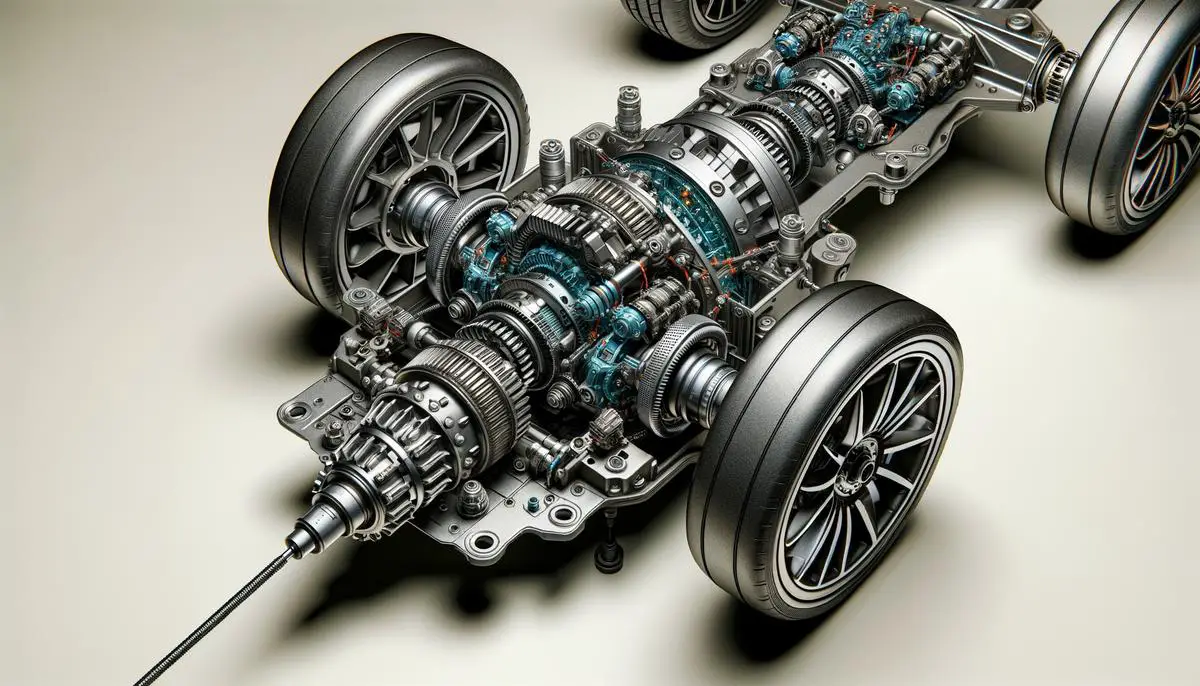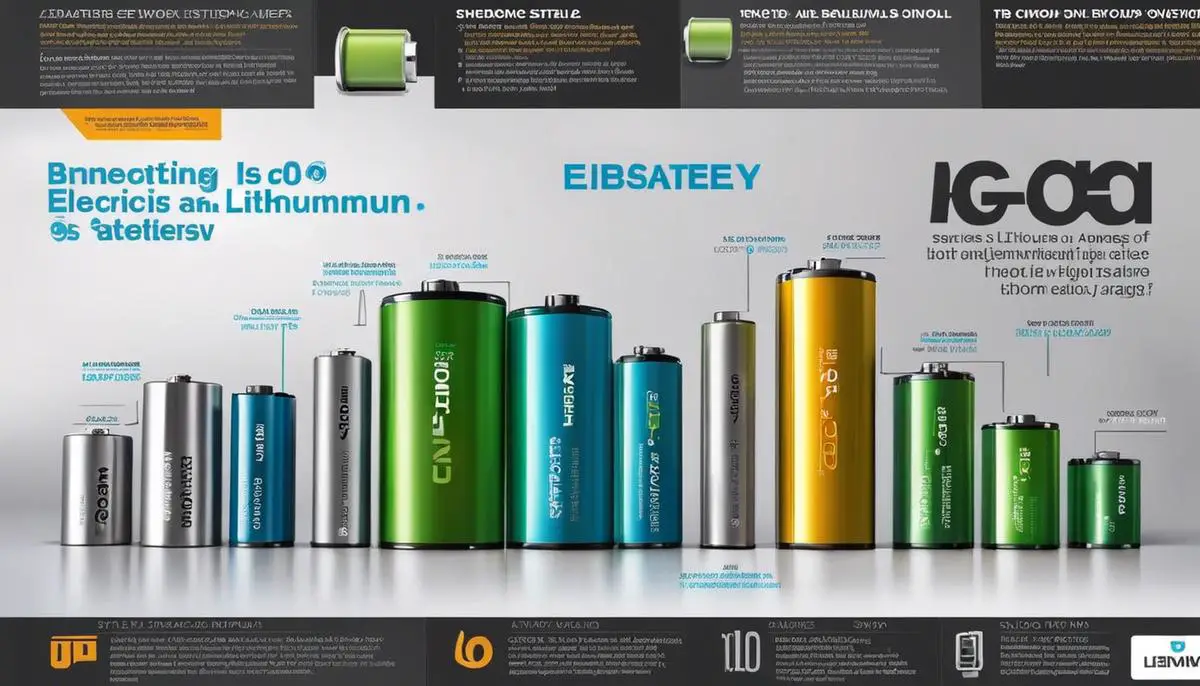Electronic differentials are stepping into the spotlight, showcasing their pivotal role in modern vehicles, especially electric vehicles (EVs). With a blend of technology and innovation, these systems are redefining what it means to have control and stability on the road. This narrative gently pulls back the curtain on the sophisticated dance of power distribution that keeps our rides smooth and efficient, highlighting the significance of electronic differentials in today’s automotive landscape.
Contents
Understanding Electronic Differentials
Electronic differentials are the brainy cousins of the traditional mechanical differentials you might find lounging under most cars. Instead of using gears and viscous fluids to divvy up power between the wheels, these high-tech gadgets rely on smart software and electronic wizardry. Their main gig? Making sure that the torque—or the turning power from the engine—is handed out to the wheels in just the right amounts. This ability is crucial, especially when roads get slippery or when you're cornering like you're in the final lap of a race.
At the heart of an electronic differential is something called torque vectoring. Picture it as the differential whispering to each wheel, telling them exactly how much to push to keep you gliding along smoothly. In a standard scenario, power goes to both wheels evenly. But throw a curve or a slick patch of ice into the mix, and the differential shifts gear—figuratively. It might dial down the juice to a wheel that's spinning freely in the air and send more power to the one firmly on the ground, giving you a grip when you need it most.
In electric vehicles (EVs), electronic differentials really come into their own. EVs are all about precision. Their electric motors can tweak power outputs in fractions of a second—much faster than traditional gas engines. This means an EV's electronic differential can react almost instantly to changes in the road or your driving, keeping you as stable as a table. It's like having a super-smart co-pilot who's always two steps ahead.
These clever gadgets also help EVs tiptoe around range anxiety. By managing power super efficiently and ensuring it's not wasted on wheels that aren't pulling their weight, electronic differentials help squeeze every last mile out of the battery. It's like getting a few extra sips out of a nearly empty soda can.
Another kicker: unlike their mechanical siblings that rely on physical parts humming and thrumming together, electronic differentials are all about the code—the software running the show can be updated. Yep, just like updating your phone to squish bugs or add new features, your car's differential can get smarter over time. It's sort of like teaching an old dog new tricks, turning your ride smoother, safer, and more fun to drive as it ages.
When it all comes down to it, electronic differentials are the hidden superheroes of modern cars and EVs. By smartly distributing power where it's needed most, they help drivers keep their vehicles glued to the road, while pushing technological boundaries into new territories. It's not just about moving forward anymore; it's about moving forward with flair and finesse.
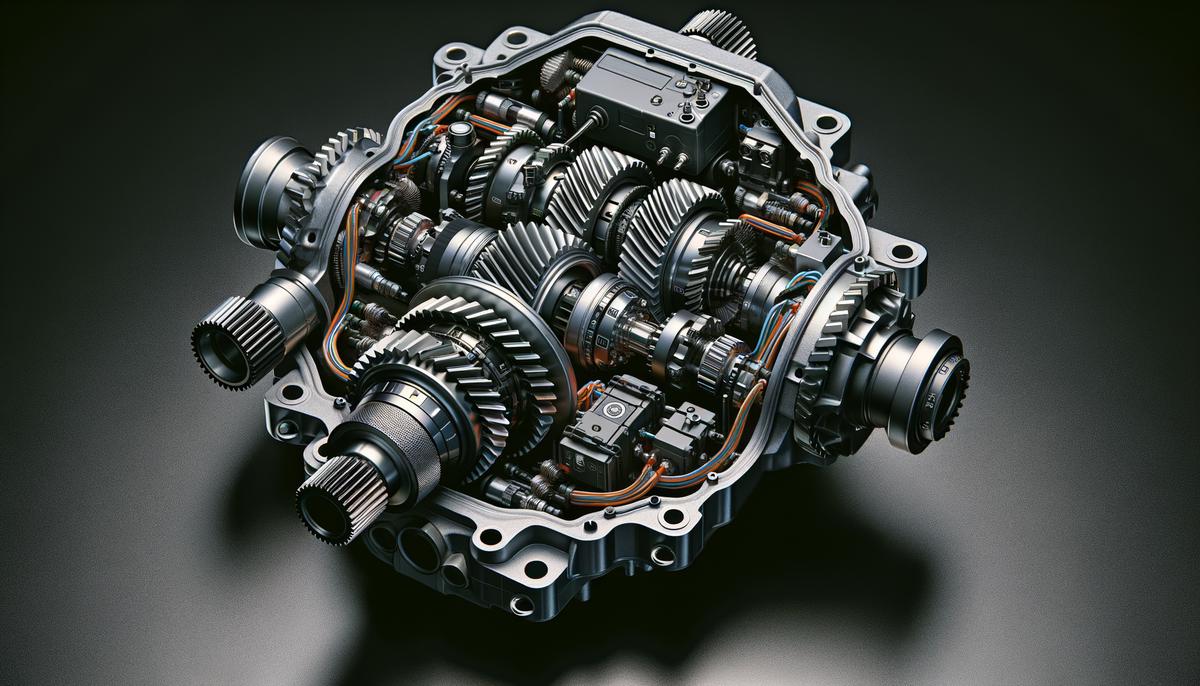
Traction Control with Electronic Differentials
In the world of electric vehicles (EVs), the drive towards enhanced safety and superior handling has led to innovative adaptations like the electronic differential system. This marvel uses sophisticated algorithms to continuously monitor wheel speed, ensuring each wheel receives just the right amount of power it needs to maintain grip, particularly crucial on slippery or uneven surfaces.
Imagine driving on a frost-laden road where traction is a premium commodity. An electronic differential takes immediate action, detecting even the slightest slip in a wheel. It cleverly redistributes torque to where it's most needed, footslogging through slippery conditions with comparative ease. This system knows that wheel slip is problem number one when traction's on the line. It's quick to react, swiftly transferring power between wheels on an axle to ensure steady and safe driving no matter the road conditions.
Unlike brake-based systems that simply prevent slip by reducing power, electronic differentials go a step further by optimizing power delivery for improved traction. This doesn't just stop wheel slip; it enhances the vehicle's overall stability, ensuring safer turns and enabling more precise handling. With electronic differentials, the driver gains an intuitive ally, adeptly maintaining control and safeguarding against unpredictable slips.
The harmony it creates between the vehicle's mechanics and electronics boosts safety as well. With each decision it makes, an electronic differential contributes to a cocoon of stability around the EV. It's like giving the vehicle its own set of instincts, reacting to changes in grip instantaneously and making split-second adjustments to keep everything stable.
Electronic differentials carefully mete out power to prevent overzealous wheel spins or unnecessary energy drain. Efficiency isn't just a buzzword here; it's a crucial strategy that helps EVs extend their daily ranges by not wasting precious battery life on unnecessary torque. It's all about smoothening out those rough edges, providing a ride that's safer, more responsive, and energy-smart.
Vehicle manufacturers can continuously refine their traction control algorithms, rolling out improvements directly to drivers via updates. This aspect ensures that electronic differentials can adapt over time to new driving conditions or enhanced safety protocols, making them future-proof components of modern EVs.
By splitting power with laser-like precision among wheels, electronic differentials ensure EVs can navigate adverse driving conditions with prowess. They stand as sentinels of traction, keeping vehicles stable and maximizing safety without sacrificing efficiency or performance – truly a cornerstone of futuristic vehicle technology.
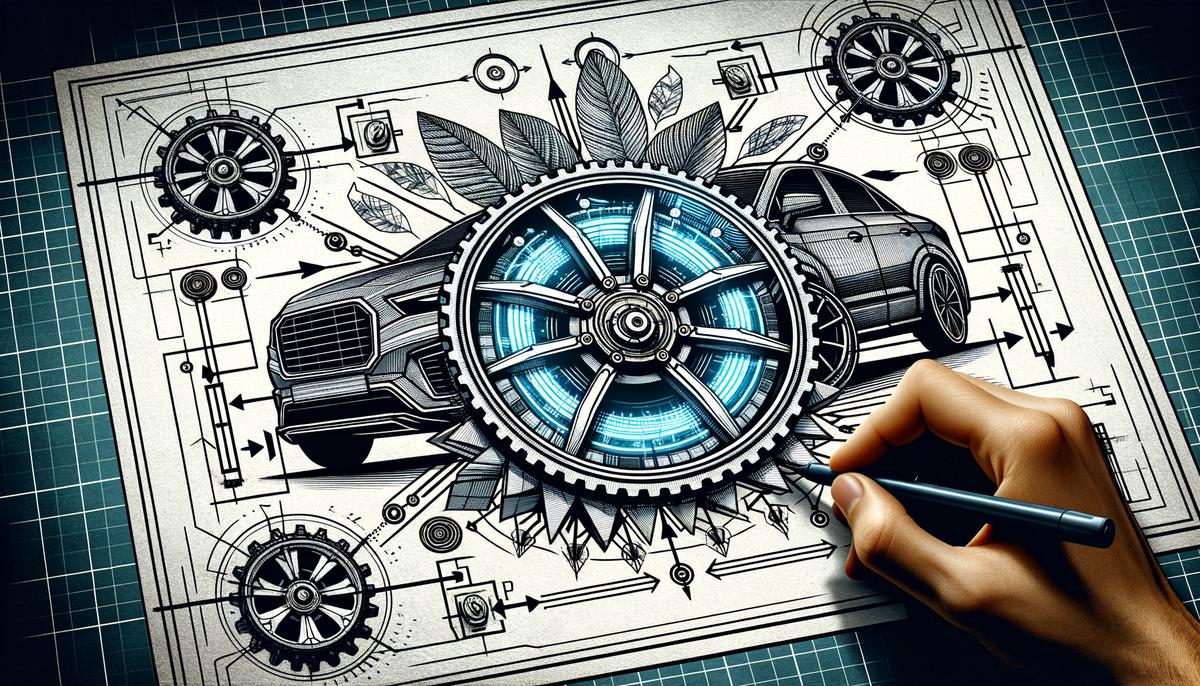
Performance Advantages of Electronic Differentials
Electronic differentials in EVs take the driving experience to a whole new level by providing sharper acceleration. The instant torque available in electric vehicles gets efficiently utilized, ensuring that power delivery to the wheels is both precise and swift. This results in a noticeable improvement in acceleration from standstill, making EVs equipped with electronic differentials feel quicker and more responsive.
Handling in EVs also sees a significant uplift with the integration of electronic differentials. By individually controlling the amount of torque sent to each wheel, drivers enjoy a more nimble handling experience, especially around tight corners or during sudden maneuvers. This capability allows EVs to maintain traction on varying surfaces, ensuring a stable ride irrespective of road conditions.
When it comes to efficiency, electronic differentials shine by reducing unnecessary power loss. Traditional differentials often distribute power evenly regardless of which wheel needs it most, leading to inefficiencies especially in scenarios where grip levels differ across wheels. Electronic differentials optimize power distribution, sending it to the wheels with the most traction. This not only enhances performance but also contributes to extended range by ensuring that every bit of energy is used effectively.
EVs with electronic differentials present a noteworthy comparison against those equipped with traditional differentials. Vehicles sporting traditional differentials lack the dynamic torque vectoring capability, which can lead to less efficient power use and slower response times in changing driving conditions. EVs equipped with electronic differentials provide a more engaging and controlled driving experience, highlighting the importance of this technology in modern electric vehicle design.
These enhancements underline the superiority of electronic differentials in improving the driving dynamics of electric vehicles. Drivers can expect not just better performance but also greater confidence behind the wheel, knowing that their vehicle is utilizing cutting-edge technology to ensure safety, efficiency, and enjoyment on the road.
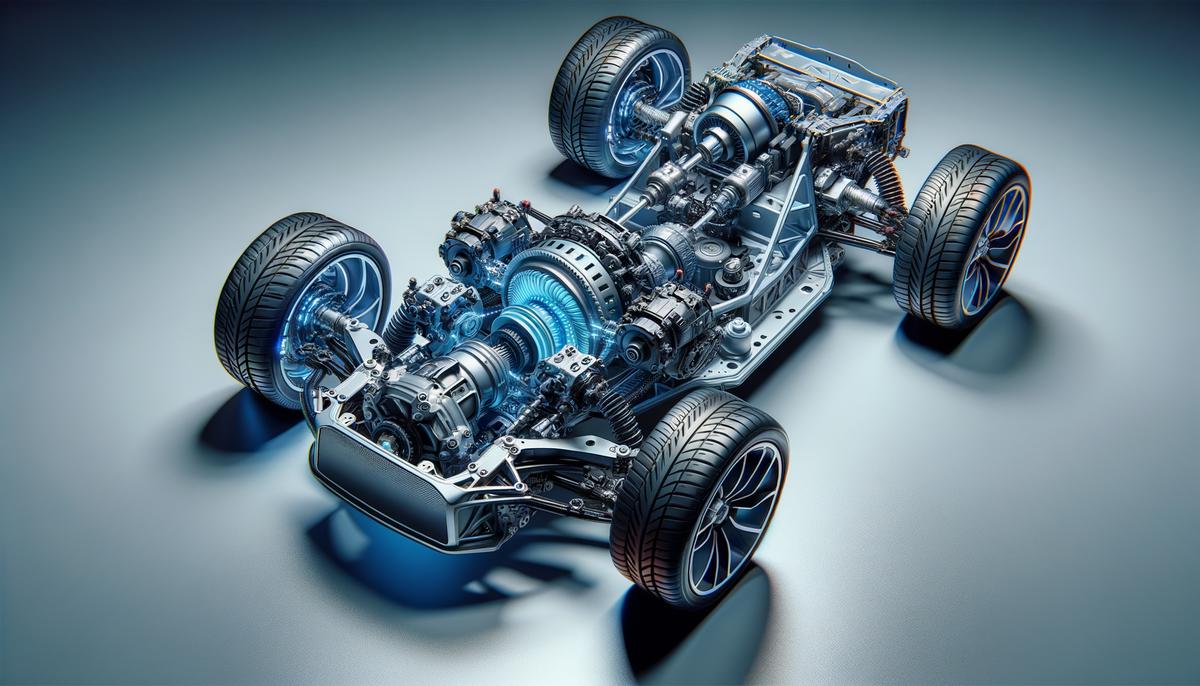
Integration Challenges and Solutions
Electric vehicles (EVs) bring a fresh set of challenges when we look at installing electronic differentials compared to their gasoline-powered ancestors. One of the primary puzzles lies in figuring out the packaging constraints. These battery-powered beasts tend to have a denser, more compact configuration, particularly around their drivetrain. To tackle this, companies often have to redesign differential systems from the ground up, ensuring they don't just fit snugly without cramping other components but also work efficiently.
Then there's the noise, vibration, and harshness (NVH) factor. EVs are remarkably quieter than their internal combustion counterparts, which means occupants can hear even the faintest hum, whir, or vibration. This sets the bar high for electronic differentials that must operate silently in the background, contributing to a smooth ride without adding unnecessary background noise or unsettling vibrations. Achieving this level of silence involves fine-tuning every component of the differential, ensuring they move together harmoniously.
Compatibility with the EV's distinctive torque characteristics also serves as a robust challenge. Electronic differentials have the crucial job of managing how power is distributed to the wheels, especially significant since EVs can generate full torque instantaneously. This can lead to situations not typically encountered with traditional vehicles, including rapid changes in traction requirements during acceleration. Engineers need insight and creativity to design differentials that can not only handle this immediate power delivery but do so in a way that protects the drivetrain and enhances vehicle performance.
Ensuring seamless integration with the vehicle's existing systems cannot be overlooked. Electronic differentials need to communicate effectively with the array of sensors, control units, and software that govern an EV's operation. This synergy is crucial for providing a responsive and adaptive drive experience tailored to various driving conditions and preferences. Often, it requires a collaborative effort during the vehicle development process to ensure the differential's control logic is perfectly in tune with that of the EV.
All these challenges might sound like a steep climb, but companies worldwide are not just meeting them head-on; they're gaining new heights, proving that the future of EV performance shines bright with possibilities. Through rigorous testing, innovative design, and a bit of engineering wizardry, electronic differentials are being refined to perfection, satisfying the stringent demands of modern EVs.
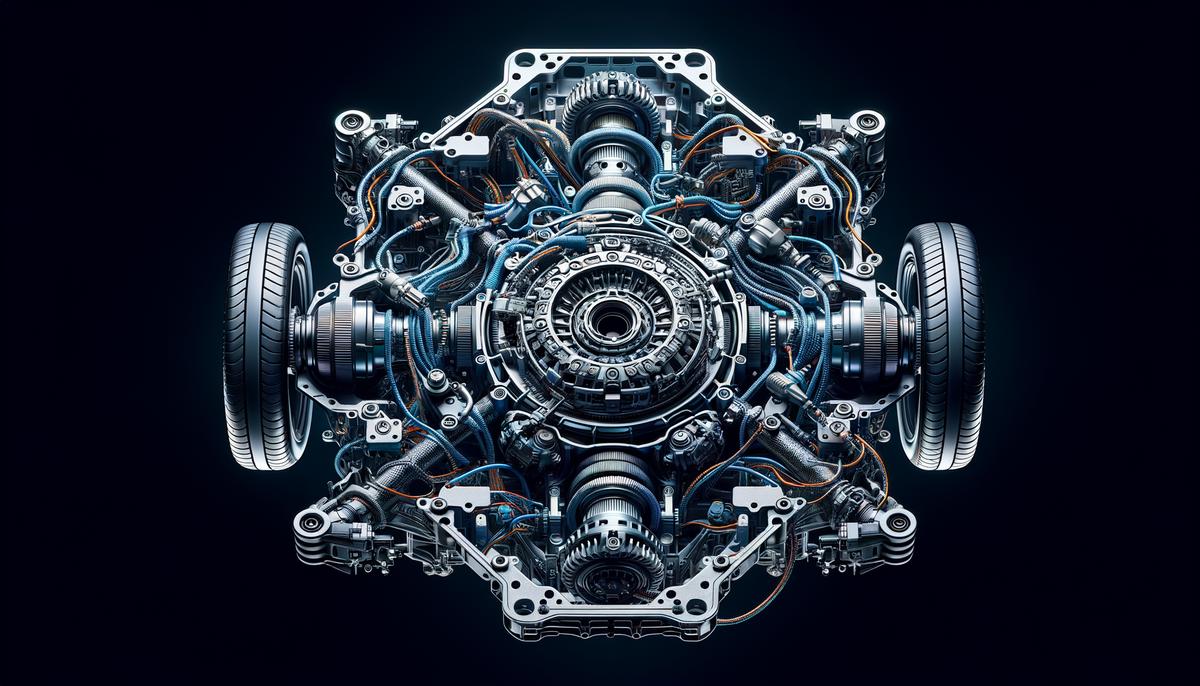
Case Studies: Electronic Differentials in Action
Tesla
Tesla, a leader in the electric vehicle market, implements electronic differentials in their Model S and X vehicles, featuring an all-wheel-drive system known as dual motor. This set-up allows for precise torque control to each wheel, offering unparalleled traction in various driving conditions, including slippery roads and off-road environments. This technology has helped Tesla vehicles achieve remarkable acceleration times, with the Model S boasting a 0 to 60 mph time of just over two seconds.
Audi
The Audi e-tron uses an electronic differential system that enhances its handling capabilities. The system intelligently distributes power between the rear wheels, improving grip and stability during high-speed cornering. This leads to a more dynamic driving experience, showcasing the e-tron's agility despite its considerable size and weight compared to traditional SUVs.
Rivian
Rivian has also adopted electronic differentials in its R1T and R1S models, designed to optimize off-road performance. The system provides advanced torque vectoring capabilities, aiding in navigating tough terrains by adjusting power outputs to individual wheels. Rivian's implementation demonstrates how electronic differentials can elevate the capabilities of electric off-road vehicles, providing them with superior control, agility, and safety in unpredictable conditions.
Porsche
Porsche's Taycan utilizes an electronic rear differential lock, which plays a critical role in its acclaimed driving dynamics. The Taycan's system adjusts the distribution of torque between the rear wheels based on driving conditions, enhancing performance during spirited driving. It illustrates how electronic differentials synergize with electric drivetrains to deliver sporty handling that rivals traditional performance cars.
Volvo
The Volvo XC40 Recharge integrates electronic differential technology to achieve balanced handling and traction. The system moderates power delivery between the wheels, ensuring optimal grip during acceleration and cornering. Volvo's integration of electronic differentials into their compact SUV highlights the versatility of this technology across different vehicle segments and driver needs.
These real-world applications from leading manufacturers validate the significant benefits of electronic differentials in enhancing the performance, safety, and driving experience of modern EVs. Each case study underscores the vital role electronic differentials play in addressing the unique challenges and opportunities presented by electric propulsion, from maximizing efficiency and range to ensuring dynamic and responsive handling across a diversity of driving scenarios.

Future of Electronic Differentials in EVs
Looking at the horizon, electronic differentials in electric vehicles (EVs) are gearing up for a future where they do much more than just manage torque and power distribution. As the automotive world swiftly pivots to electric mobility, these advanced systems are expected to become even smarter, embracing new innovations that promise to redefine the driving experience.
Imagine electronic differentials that dynamically adjust to driving styles, weather conditions, and road surfaces in real-time. These smarter systems might utilize AI and machine learning to learn a driver's habits and preferences, offering a drive that's not just optimized for efficiency and safety but also personalized for enjoyment and comfort.1 This feature could be just a software update away in the near future.
As EV batteries and motors evolve, so too will the demands on electronic differentials. We're likely to see systems that can handle higher torque outputs more efficiently, extending the range of EVs while delivering exhilarating acceleration and responsive handling. These advancements will be fundamental in tackling one of electric mobility's biggest challenges: making efficient use of the battery's power to ensure cars can go further on a single charge without sacrificing performance.
Another promising area for electronic differentials is in the integration with autonomous driving technologies. As cars become more self-sufficient, the precision control offered by electronic differentials could play a pivotal role in autonomous manoeuvres, ensuring that vehicles not only make smarter decisions but also execute them with enhanced stability and safety.2
In terms of responsiveness, we might see systems that act upon electronic sensors and camera inputs to preemptively adjust settings before a wheel slip even occurs, based on the recognition of road conditions or obstacles. This predictive capability could hugely improve vehicle dynamics, making cars safer by proactively countering potential traction losses or instability.
The modular design of EV powertrains presents opportunities for electronic differentials to be seamlessly baked into the car's architecture from the ground up. This means designers and engineers could further optimize space, weight, and power distribution in ways previously constrained by the bulkier components of internal combustion engine vehicles. Such integration may also lower production costs, facilitating broader adoption of advanced differential systems across all vehicle segments.
Since electric vehicles emit significantly less noise than their gasoline-powered counterparts, the NVH (Noise, Vibration, Harshness) characteristics of all onboard systems, including electronic differentials, will come under greater scrutiny. Future developments might focus on reducing operational sounds even further, contributing to the exceptionally quiet and smooth ride quality that EV drivers value.
As personalized mobility solutions gain traction, electronic differentials could enable a range of vehicle customizations straight from the manufacturer's app. Whether it's setting your EV for maximum performance on track days or optimizing for energy efficiency for daily commutes, the ability to tweak your car's power distribution profiles could become a standard feature offered by automakers.
The road ahead for electronic differentials in EVs is as exciting as it is crucial. With every leap in electric vehicle technology, these sophisticated systems will continue to play an essential role in propelling the industry forward, not just by improving performance, safety, and efficiency but by also offering the adaptability required to meet the changing needs and expectations of drivers worldwide.
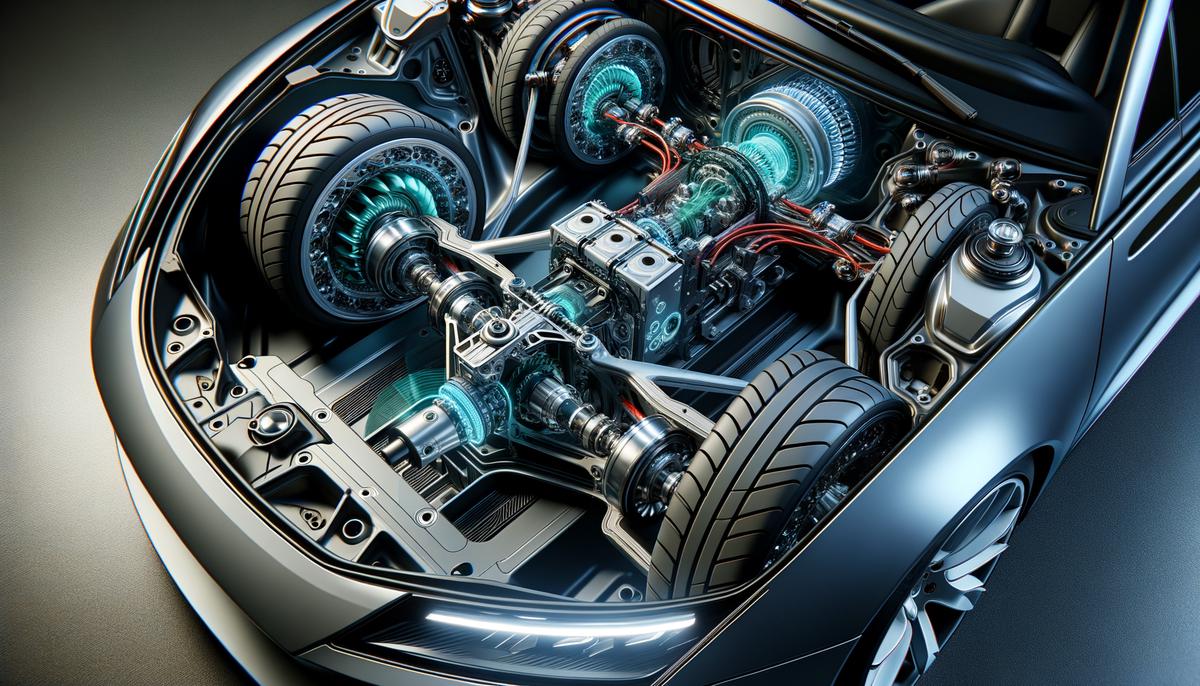
In wrapping up, the most critical takeaway is the transformative impact electronic differentials have on the driving experience. By intelligently managing torque and ensuring optimal power distribution, they not only enhance vehicle performance but also promise a future where every journey is smoother, safer, and more enjoyable. As we look ahead, it’s clear that electronic differentials will continue to be a cornerstone in the evolution of electric vehicles, steering us towards a more dynamic and efficient mode of transportation.
- Iora P, Tribioli L. The impact of electric mobility scenarios in large urban areas: the Milan case study. Renew Sustain Energy Rev. 2021;141:110771. doi:10.1016/j.rser.2021.110771
- Zhu J, Yang Y, Cai Y, Guo J, Karimi HR. Adaptive sliding mode control of dynamic systems with unknown input: application to vehicle active suspension systems. IEEE Trans Industr Inform. 2022;18(3):1701-1710. doi:10.1109/TII.2021.3076407
